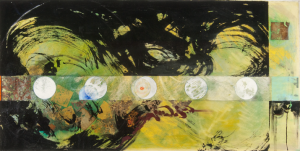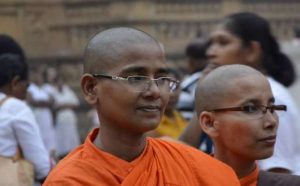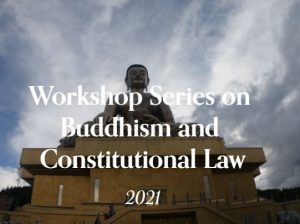In this series, Johan Nilsson takes a look at the international nexus of Shin Buddhist leaders around the world. In his first entry, he spoke to Clement Tan of Singapore about establishing a Shin Buddhist center in the city state. This is Part Two of their interview.
Read Part 1

BDG: Have you faced any unique challenges in establishing a dojo in Singapore? Do you anticipate any challenges in the future?
Clement Tan: Locating a suitable property was one factor, as only limited old historical zones in Singapore allow for religious activities to take place in private properties. The next challenge was to pay for the property and related renovations. The additional fittings and so on also took much effort. As with any new entity, the initial outlay is really on oneself. Being unregistered or unaffiliated also means that it is not possible to seek donations or support.
As for other challenges that I face, most traditional Chinese Buddhists tend to be highly suspicious of Japanese Buddhist groups. Some reasons are tied to wartime memories. Another reason is that many tend to think that Japanese Buddhist schools are extreme and cultish. The underlying cause for this is that Nichiren-based groups were introduced to Singapore in the 1980s and their exclusive teachings were at variance with local cultural norms.
Moving forward, the extra rooms in the property will need to be rented out for income, and the hall will be rented out for ad-hoc religious events. These would be useful in defraying part of the monthly mortgage payments and other expenses. It is also significant to note that Jodo Shinshu doesn’t do most of the income-generating activities common in Chinese Buddhism. Examples might include the sale of ancestral tablets, ancestral salvific prayers or petitionary prayers for health, lighting LED perpetual lamps, and so on.
Other than attracting local English-speaking Buddhists, I also hope to attract Japanese expatriates. Most are non-religious working adults but I believe that there would be some belonging to Jodo Shinshu, Jodo Shu, or Tendai.
Most importantly, as I am holding down a full-time job, it is not easy to find spare time to organize activities and meet-ups.

BDG: Singapore is a majority ethnic Han society. Singaporean Buddhists are overwhelmingly Han Chinese. Do you make any special accommodation for Chinese Buddhist customs? For example, do you use Mandarin or Chinese dialects for the Dharma talks, liturgy, or nianfo/nembutsu? Do you integrate Chinese Buddhist aesthetics into the design of your dojo or into the details of your rituals?
CT: This is an important question. When new forms of Buddhism are introduced to Singapore, they adapt to the local context in varying ways. For examples, Tibetan and Thai centers might have Chinese forms of Guanyin, or use Chinese offering cakes or hold ancestral salvific rituals. Some might also hold separate services catering to those who prefer to listen to Mandarin talks instead of English talks. Some also allow for prayers to be recited in Mandarin Chinese or English (instead of Tibetan or Pali). Others might be more rigid and adhere to the original form. This is typical in Nichiren based schools here, where followers are expected to use only Japanese for their Gongyo for chapters in the Lotus Sutra.
For my dojo, I plan to do it a hybrid way with both Mandarin and Japanese language Gongyo. For my opening, we tried it out and I think it might work in the future. Also, I plan also to accommodate traditional Chinese Mandarin Amitabha Sutra recitations. However, these are just plans at the present moment. Hong Kong Horai currently does their recitations in Mandarin and their Dharma talks in the local Cantonese vernacular. I can thus tap on their experience to work out the best fit.
My setup is mainly Chinese-looking, using local Chinese brass implements with a red table cloth. I decided to use the Zenko-ji-styled Amida triad school as it looks more Chinese and is non-denominational. Interestingly, most casual visitors to my place (such as my contractors), who happened to see my setup did not identify it as “Japanese.” The Taima Mandala was displayed prominently with a traditional Chinese dragon table skirt, and I think that this combination blended in nicely as well.
My sense is that locals might be more accepting of things familiar to them as opposed to something new. Also, Jodo Shinshu is not something that many will accept right away, and it seems more prudent to start with familiar setups. In addition, I also do not wish for people to come just because Japanese styled setups or recitations seem more exotic and unusual.
BDG: Could we hear a bit about your sangha, for example its size and the demographic background of its members? What is the age range? Does the membership skew toward the young, middle aged or elderly? Are they all ethnically Han Chinese, or do you have members of other ethnicities, either local or expatriate?
CT: At present, I do not have formal members or attendees. Most who have some interest in Jodo Shinshu tend to be English-speaking working adults who have some knowledge of Buddhism after trying out different schools. Most established Pure Land-based groups tend to be Putonghua-speaking, catering to an older generation (who were educated in Chinese). Due to our country’s education system, most Singaporeans tend to be more comfortable reading and speaking English. Many are unable even to read regular Chinese newspapers in the simplified script. Chinese Buddhist texts imported from Taiwan in the traditional script with highly technical terms are often out of reach for most people.
Therefore, my aim is to hold the discussions in English. This has similarities to the adoption of Sri Lankan Theravada schools by some English-speaking Peranakan Chinese who wanted to learn about Buddhism, but were put off by the complex Classical Chinese chants or texts of Chinese Buddhism.

BDG: What activities do you hold at your dojo? Are activities weekly or monthly? Do you hold special services for annual occasions, either specifically Shin (such as Ho’onko), generally Japanese Buddhist (such as Ohigan) or Chinese (such as Qingming)?
CT: I have only held my opening ceremony, which was streamed on Facebook Live and Zoom. Although the attendees were few, it is significant as it marked the start of something that I really wanted to do. As for other Shinshu observances, I think I will take things in my stride and perhaps start slowly next year, such as holding a Shoshinge recitation observance for Shinran’s birthday. As I have not received formal training in the specific ritual observance for Shinshu events (for example, ritual reading of Godensho and Rennyo’s Gobunsho), I think I will stick with the basic Shinshu liturgy and concentrate more on the teachings. This means that I will consider reading the Letters of Rennyo in English.
As for local observances such as Qingming or Chinese New Year, I will set up a simple Amida altar for interested people to pay their respects. Generally speaking, most working people are unlikely to request ancestral salvific prayers or recitations on their own.
I plan to hold bi-monthly discussion meetings in 2025.
BDG: Do you use English or Chinese texts of the Jodo Shinshu canon? Do you face any difficulties finding Shin Buddhist texts in simplified Chinese? Have you made any translations yourself?
CT: At present, I used texts published by the International Association of Buddhist Culture (IABC) as my main source of reference. The IABC supported me by sending quite a number of books. These liturgy books are romanised with Western music notation, which makes it easier for those with limited Japanese knowledge to learn. There are also other texts published in Hawaii, which has bilingual text, translations, and romanization. Hong Kong uses traditional Chinese characters that are largely the same as Japanese ones. The difference is that the wasans (Japanese hymns) and Letters of Rennyo were translated into Chinese.
The tune largely follows the Japanese style. I have not done any translations as there is sufficient material available. The only additions that I did was to manually add numerical notation* under the Western musical staves printed in the IABC text. From experience, it seems that using Japanese is easier for English-educated ** Chinese, who are not good with reading classical Chinese or unable to read Hanyupinyin. More importantly, I think it is good to emphasize that most people tend to eschew sutra recitations, which tends to be very dry for those who are unable to comprehend the text. Thus I think the focus will be on Shinshu discussion instead of the liturgy.
BDG: Does your dojo have an ordained priest? Are there any plans for someone to receive ordination?
CT: At present, my dojo is really self-run and I have not taken ordination. I think that future plans will depend on family and career commitments. Although I feel that Tokudo is important in the traditional Jodo Shinshu framework, I think it is largely symbolic and being a lay leader is the best that I can do at present.
BDG: Do you have a website? What ways can someone interested in joining your sangha contact you to become involved?
CT: I have a Facebook group named Zenkoji Amida Nyorai in Singapore. Interested people can drop me a message there. However, I do not maintain a permanent shrine or altar so as to keep the place neutral for event rental purposes.
BDG: Thank you very much for your time and for sharing with us.
* Numerical notation (jian3 pu3 简谱) is a simplified form of music notation using 1–7 to indicate the notes of a major key. It is commonly used in Chinese vocal music and folk music.
** Mandarin and pinyin was only introduced nationwide in the late 1970s and older people who came from the colonial-style English education system are often unable to speak Mandarin fluently or read pinyin. They might be more familiar with the older Wade-Giles system of romanization, which is easier for English speakers to pronounce. As Japanese tend to simplify the pronunciation and tones of Chinese characters, Japanese readings of sutras are often comparatively easier to learn.
See more
Zenkoji Amida Nyorai in Sg (Facebook)
Taima Mandala
Related features from BDG
Jingtu Zhenzong: Jodo Shinshu among Ethnic Chinese, Part One
A Pure Land on the Rhine: Rev. Marc Nottellmann and the Eko House
Sangha Luso-Hispana Jinen-kô: An Online Shin Buddhist Community













